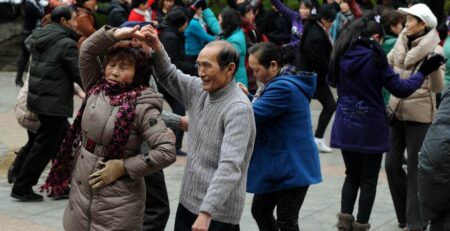Asia’s population is shrinking faster than any other continent’s.
Asia faces a problem: Its population is aging faster than any other continent’s. A growing percentage of people in Japan, South Korea and China are over 65, and those countries’ economies are suffering because of a lack of available workers. Governments are struggling to find the money to support retirees.
The problem is pronounced in Japan. I spoke to Motoko Rich, The Times’s Tokyo bureau chief, about what it means when a society ages this quickly.
Claire: You’ve reported on the rapidly graying populations of Japan and other Asian countries. How much is Asia aging, and how did we get here?
Motoko: Let’s start with Japan. Almost a third of the population is over 65. For comparison, in the U.S. that number is about 17 percent. And experts say South Korea and China are on track to reach similar levels in the coming years.
Source: United Nations Population Division
One reason is the low birthrates in these countries. In China, it was because of the one-child policy. In Japan and Korea, gender inequality and the high cost of raising children played important roles. Because of high expectations at home, it’s hard for women to combine parenting with having a fulfilling career. As a result, more women are postponing childbirth or deciding not to have children at all.
Life expectancy is also long in these countries. Looking from afar, there are some jolly aspects to that, like happy centenarians who are living healthy lives on the Japanese island of Okinawa. But there’s a dark side. Japan has the highest percentage of old people with dementia. And there are not enough workers to take care of them and even to fill the jobs to run the economy.
I understand why an aging population poses challenges within a country. What does it mean for people living elsewhere?
It’s coming for you. Population growth in the U.S. is at extremely low levels. Italy’s population is aging at the fastest rate in the West. Other countries will look toward Asia and learn from it. They’ll see what to do or what not to do.
Read more @TheNewYorkTimes
[Views]











